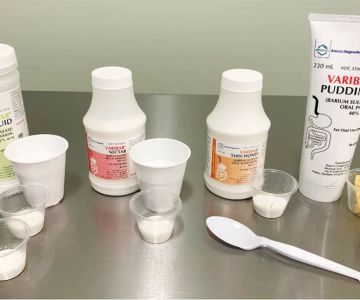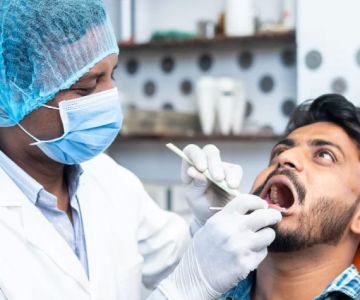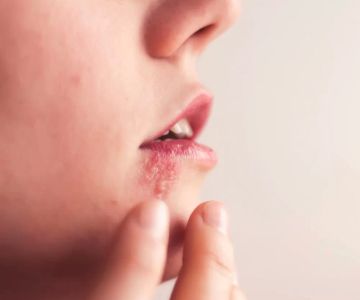How Often Should Oral Hygiene Checks Take Place?
Oral hygiene checks are a crucial component of maintaining a healthy smile and preventing dental problems before they start. In the United States, many people wonder how often they should schedule these dental visits to ensure their teeth and gums remain in excellent condition. The frequency of oral hygiene checks depends on individual health needs, lifestyle, and risk factors. This article explores the recommended intervals for dental checkups, the benefits of regular oral hygiene evaluations, and what you can expect during these visits.
Understanding the Purpose of Oral Hygiene Checks
Oral hygiene checks are comprehensive examinations performed by dental professionals to assess your dental health. They typically include cleaning, screening for cavities, gum disease, oral cancer, and other issues. Routine checks help catch problems early, when treatment is simpler and more effective.
Regular visits also provide an opportunity for personalized advice on brushing, flossing, diet, and habits like smoking that impact oral health. The American Dental Association (ADA) emphasizes that prevention is better than cure, and oral hygiene checks are central to prevention.
1. Standard Recommendations for Frequency of Oral Hygiene Checks
For most healthy adults, the widely accepted guideline is to have an oral hygiene check every six months. This biannual schedule balances thorough monitoring with practicality, allowing dentists to spot early signs of decay, gum inflammation, or other concerns.
However, this six-month rule is not universal. Some patients with excellent oral hygiene and no history of dental issues may extend visits to once a year without compromising their health. Conversely, individuals with specific risk factors might require more frequent visits.
2. Factors Influencing the Frequency of Dental Checkups
Several personal and medical factors can influence how often you should have your oral hygiene checked:
- Gum Disease History: Patients with periodontitis or gingivitis may need visits every 3 to 4 months for close monitoring and maintenance.
- Smoking and Tobacco Use: Tobacco users face higher risks for gum disease and oral cancer, warranting more frequent checks.
- Diabetes and Other Medical Conditions: Certain systemic illnesses can impact oral health, necessitating regular professional care.
- Poor Oral Hygiene Habits: Those struggling with daily oral care might benefit from more frequent cleanings and checkups.
- Orthodontic Treatment: Patients with braces or other dental appliances often require closer supervision to prevent plaque buildup and cavities.
- Age: Children and older adults might need tailored schedules depending on dental development and wear.
3. What Happens During an Oral Hygiene Check?
During an oral hygiene check, dental hygienists and dentists perform a detailed inspection and cleaning process:
- Examination: Your mouth is checked for signs of cavities, gum disease, plaque buildup, and oral cancer. This includes visual inspection and sometimes X-rays.
- Professional Cleaning: Removing tartar and plaque deposits that can’t be eliminated by brushing and flossing at home.
- Polishing: Teeth are polished to remove stains and smooth surfaces, reducing future plaque adherence.
- Fluoride Treatment: In some cases, fluoride varnish or gel is applied to strengthen enamel.
- Advice and Education: Personalized guidance is provided on oral hygiene techniques, diet, and lifestyle factors.
4. Real-Life Stories Highlighting the Importance of Regular Oral Hygiene Checks
Consider the case of Lisa, a 35-year-old woman who routinely skipped dental appointments. After experiencing mild gum bleeding, she finally visited her dentist and was diagnosed with early-stage gum disease. Had she attended oral hygiene checks every six months, this condition could have been detected and treated sooner, preventing discomfort and costly procedures.
Conversely, John, a non-smoker with excellent dental habits, visits once a year. His dentist confirmed that his oral health remains stable and no more frequent checks are necessary. This personalized approach shows why one-size-fits-all scheduling does not work for everyone.
5. Tips for Maintaining Oral Health Between Hygiene Checks
While professional visits are essential, daily oral hygiene plays the biggest role in keeping your mouth healthy. Consider these tips:
- Brush at least twice daily using fluoride toothpaste.
- Floss daily to remove plaque from between teeth.
- Limit sugary and acidic foods that contribute to decay.
- Avoid tobacco products to reduce risks of gum disease and oral cancer.
- Stay hydrated and consider chewing sugar-free gum to stimulate saliva.
- Schedule your oral hygiene checks consistently and keep appointments.
6. How to Choose the Right Dentist for Your Oral Hygiene Checks
Choosing a trusted dental professional can improve your experience and encourage regular checkups. Look for a dentist who:
- Is experienced and licensed in your state.
- Offers clear communication and personalized care plans.
- Uses modern technology for accurate diagnosis and comfort.
- Has good patient reviews and reputation.
- Accepts your insurance or offers reasonable payment options.
For reliable dentist recommendations and service options, visit Dentistry Toothtruth, a trusted source to find the best oral care near you.
Investing in Regular Oral Hygiene Checks Pays Off
In the United States, maintaining a consistent schedule for oral hygiene checks is a vital investment in your overall health and well-being. Whether every six months or tailored to your personal needs, these visits prevent minor issues from becoming major problems. Alongside good home care, professional dental checkups keep your smile bright, fresh, and healthy throughout your life.







 Growing Smiles of Voorhees4.0 (2464 review)
Growing Smiles of Voorhees4.0 (2464 review) Affordable Dentures & Implants4.0 (855 review)
Affordable Dentures & Implants4.0 (855 review) Coventry Family Dental4.0 (247 review)
Coventry Family Dental4.0 (247 review) Hiser Orthodontics5.0 (283 review)
Hiser Orthodontics5.0 (283 review) Sapphire Family Dental (Dr. Amy Chi, Dr. Emily Allen & Dr. Steven Rzepecki)4.0 (208 review)
Sapphire Family Dental (Dr. Amy Chi, Dr. Emily Allen & Dr. Steven Rzepecki)4.0 (208 review) New York Total Dental5.0 (85 review)
New York Total Dental5.0 (85 review) The Importance of Oral Health Education During Pregnancy for a Healthy Pregnancy
The Importance of Oral Health Education During Pregnancy for a Healthy Pregnancy Best Tips for Brushing Your Teeth Properly for Healthy Gums: Essential Techniques for Oral Health
Best Tips for Brushing Your Teeth Properly for Healthy Gums: Essential Techniques for Oral Health Why Skipping Dental Checkups Can Lead to Bigger Oral Health Problems
Why Skipping Dental Checkups Can Lead to Bigger Oral Health Problems Advantages of Porcelain Dental Restorations
Advantages of Porcelain Dental Restorations How Can Diabetes Cause Tooth and Gum Problems? Preventing and Managing Oral Health Issues
How Can Diabetes Cause Tooth and Gum Problems? Preventing and Managing Oral Health Issues Healthy Habits for Promoting Good Oral Health and Hygiene: Tips for a Healthy Smile
Healthy Habits for Promoting Good Oral Health and Hygiene: Tips for a Healthy Smile